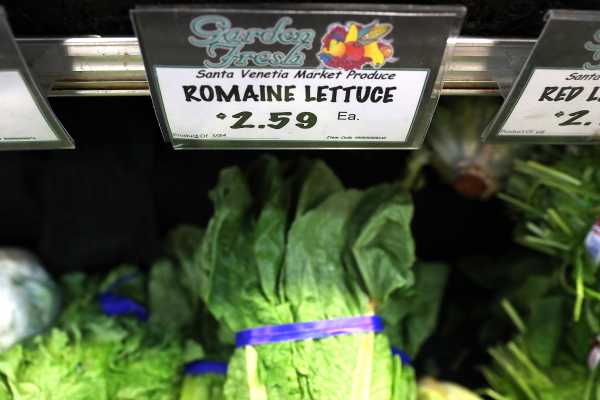
Last week, just days before Thanksgiving, the Centers for Disease Control and Prevention issued a stark warning against romaine lettuce. The agency warned that no one in the United States should eat romaine, due to a recent outbreak of the bacteria E. coli believed to be linked to its consumption. The CDC advised that people and restaurants should throw away all romaine lettuce, regardless of whether anyone has been sickened, and sanitize the areas in which it was stored.
It was a such a severe blanket warning because the CDC and the Food and Drug Administration couldn’t pinpoint a single producer of romaine as ground zero for the outbreak.
The CDC hasn’t lifted its warning against consuming romaine, but both the CDC and the FDA are getting closer to tracking down the source of the outbreak.
On November 23, FDA Commissioner Scott Gottlieb announced that the outbreak “likely” stemmed from California-based producers. “The goal now is to withdraw the product that’s at risk of being contaminated from the market,” he announced on Twitter.
When the CDC issued its warning last week, 32 people in 11 states had been sickened. (There’s been no update since.) Symptoms of an E. coli infection typically appear three to four days after exposure and can vary, but often include severe stomach cramps, diarrhea (often bloody), and vomiting. There have been no reported deaths so far.
It also appears the contaminated lettuce has infected people in Canada. Canadian health officials have reported 22 cases of E. coli linked to the current outbreak in three provinces: Ontario, Quebec, and New Brunswick. (Officials have not confirmed the two outbreaks are related, but it seems likely they are.)
This is not the first outbreak of E. coli from romaine lettuce this year. An outbreak that lasted four months (March through June) sickened 210 people and killed five; 96 people were hospitalized. The CDC was able to trace the outbreak back to a romaine producer in Yuma, Arizona. It’s likely that the lettuce was contaminated by an infected water source nearby.
How does lettuce become contaminated with bacteria? As Vox’s Julia Belluz explained earlier this year:
What’s more, it can be hard to track an outbreak to a single source. “Different lettuces grown at different farms get mixed into bags that are distributed at supermarkets and restaurants all over the country, so food safety officials need to search for the common link among suppliers,” Belluz writes. Even linking the problem lettuce to California doesn’t narrow things down tremendously; the state has 60,000 acres of romaine production.
For now, the warning against eating romaine has not been lifted. And it may be some time before the source of the outbreak is tracked down and it’s safe to eat Caesar salad again.
Sourse: breakingnews.ie
0.00 (0%) 0 votes

































